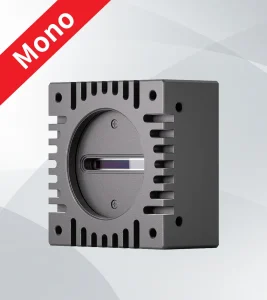USB 3.0 is making itself felt with higher data speeds, lower latency and increased band-width requirements -- all of which contribute to improved performance for fast imaging applications using industrial cameras. That said, the big advantage with USB 3.0 ( compared to prior versions ) is data transfer at a maximum speed of around 5* Mbps, ten times faster than its predecessor which ran as fast as half-a-gigabit per second! These faster speeds enable industrial cameras to capture and handle high-resolution images and higher frame rates without data bottlenecks – a critical advantage in applications such as machine vision, robotics or quality control.
Therefore, the USB 3.0 camera can easily handle full HD video (1920x1080) at 60 frames per second fps or higher resolution formats like 4K with lower frame rates too. So USB 3.0 is particularly suitable to applications, requiring higher resolution such as automated inspection systems or precision measurements making it ideal for real-time processing requirements. USB 2.0 cameras, for example, might have difficulty processing these images at an equivalent frame rate because of lower bandwidth compared to GigE or USB 3.0 interfaces which can result in lag or dropped frames when capturing full resolution uncompressed video streamplt_stream_with_virtual_cameras
One other good thing about USB 3.0 is that it can support much larger image sensors, too. For instance industrial cameras, with CMOS sensors that capture more data as the increased bandwidth. This is especially helpful when applications need high details and image capture as fast, for example biomedical imaging or 3D scanning. In 2021, the MarketandMarkets industry report noted USB3.0 industrial camera are also in demand for scientific research and automation due to their speed without compromising effectiveness or requiring extra power.
The plug-and-play capabilities of USB 3.0 make it easier to integrate industrial cameras with existing systems as well. These cameras can be interfaced with a computer or other hardware directly which reduces setup complexity and costs than other interfaces that will require external frame grabbers. Consequently, they are a good alternative for small and medium scale deployments which would also provide budget-favorable use.

USB 3.0 offers big latency improvements Reducing latency is critical for realtime applications such as robotics or motion tracking, where delays in the image being received causes errors and inefficiencies. The new USB 3.0 interface decreases the time between when an image is captured and transmitted, which allows for faster decision-making in automated processes.
“Adopting USB 3.0 cameras has been game-changing for many industries, as this technology offers improved data capture with very little to no limitations from older interfaces,” said James Lee, technical expert – industrial automation at Thorlabs. USB 3.0 cameras have become industry standard in anything that needs rapid image processing, from pharmaceutical manufacturing to automotive assembly thanks to this speed and reliability.
Another pro of using it is about the cost efficiency. Although Camera Link or CoaXPress offer even higher speeds, the expense of these cameras and their critical infrastructure is significantly more. These specifications reflect a good balance between performance and cost, which is why we chose USB 3.0 as the interface for our embedded machine vision solutions in many industrial applications. This makes them a cost-effective high-speed imaging solution so long as USB 3.0 transfer rates are adequate for their application, to the tune of $500-$1,200 per camera based on features and specs.
In summary, with all the improvements we have listed above USB 3.0 can help your industrial camera application to take a whole new level of performance while still keeping things cost-effective and easy-to-integrate as it used to be for earlier versions like USB2 or Ethernet cameras! For more information about USB 3.0 industrial camera models please refer to usb3 0 industrial camera.